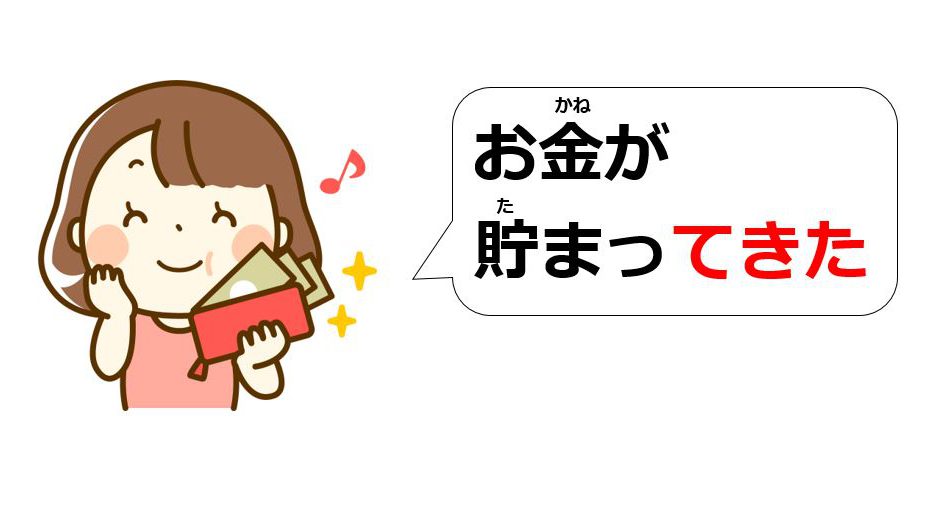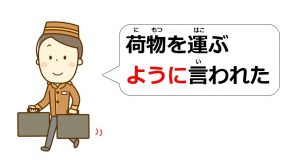Last time, you learned how to express giving and receiving, e.g. 田中さんが日本語を教えてくれた (Tanaka-san taught [me] Japanese). By using the helping verb: てくれる, you can express your gratitude. In Japanese, helping verbs have an important role. In this lesson, you will learn other key helping verbs.
Explanation for How Helping Verbs: …ていく and …てくる Work
| Table of Contents Motion of Subjects Motion of Objects Time Flows |
The origins of the two words come from the verb: 行く and 来る. However, it is common to use Hiragana when they work as helping verbs. As you learned, you combine verbs with helping verbs by using the te-form. Now, let’s move onto the functions.
Motion of Subjects
| [私は / が] | 学校に | 歩いて(いく / いきます) |
| Topic / Subject | Destination | Verb + Helping Verb |
| [I] will walk (and go) to School. | ||
The concept of “行く: to go” and “来る: to come” is a little different from English. In Japanese, when you move from your place to other places, you always use 行く and vice versa. When you combine verbs which indicate motion like “歩く: walk” with ていく and てくる, you can express manner of motion.
| 駅まで歩いて(いく / いきます)。 [I] will walk (and go) to the station. |
| ここまで走って(きた / きました)。 [I] ran (and came) up here. |
When you combine verbs which indicate resultant states with ていく and てくる, you can express motion with the states.
| 京都に着物を着て(いく / いきます)。 [I] will wear a kimono and go to Kyoto. |
| 本をたくさん持って(きた / きました)。 [I] have brought a lot of books. |
When you combine general verbs with ていく and てくる, you can express motion after you have completed the action.
| ワインを買って(いく / いきます)よ。 [I] will buy a bottle of wine and go [there]. |
| 学校でごはんを食べて(きた / きました)。 [I] ate a meal at school and then came [up here]. |
[adsense]
Motion of Objects
| お母さん は / が | メールを | 送って(きた / きました) |
| Topic / Subject | Direct Object | Verb + Helping Verb |
| [My] mother sent an email (and it reached me). | ||
This usage appears with only …てくる when something is transferred to your place. With the above example, “送る: to send” just expresses an action at the sender’s end. By combining the helping verb: …てくる, you can express whether it reaches you.
| 田中さんが夜に電話をかけて(きた / きました)。 Tanaka-san called [me] at night. |
| 友達が長い手紙を書いて(きた / きました)。 [My] friend wrote a long letter [to me]. |
Time Flows
| [私 は / が] | たくさん | 努力を | して(きた / きました) |
| [Topic / Subject] | Adverb | Direct Object | Verb + Helping Verb |
| [I] have made a lot of efforts (and come to be who I am today). | |||
ていく and てくる also express a time flow from the past to the future. Comparing the plain expression of the above example: たくさん努力をしました, you can express consistency from the past to the future. If you combine verbs which indicate change like “なる: to become” with ていく and てくる, you can express a step of change.
| 失敗もたくさんして(きた / きました)。 [I] have made a lot of failures, too. |
| これから日本語を勉強して(いく / いきます)。 [I] will study Japanese from now on. |
| 徐々に夏になって(いく / いきます)。 [It] will become summer gradually. |
| 少しずつ大人になって(きた / きました)。 [My child] has grown into an adult little by little. |
Let’s delve deeper into the tenses with ていく and てくる. The conjugation will depend on where you put yourself in terms of tense
The first case is when you put yourself at present. In this case, ていく means future tense and てくる needs to be てきた and indicates present perfect tense.
| これから勉強して(いく / いきます)。 [I] will study from now on. |
| たくさん勉強して(きた / きました)。 [I] have studied a lot. |
The second case is when you put yourself in the future. This is simple. Both of them indicate future tense.
| 10月からドイツ語を勉強して(いく / いきます)。 [I] will study German from October. |
| 6月には暑くなって(くる / きます)。 By June, [it] will be hot. |
The third case is when you put yourself in the past. In this case, ていく needs to be ていった and indicates past-future tense, i.e. “would.” てくる needs to be てきていた and indicates past perfect tense, i.e. “had done.”
| 2月から暑くなって(いった / いきました)。 From February it would become hot. |
| ちゃんと準備をして(きていた / きていました)。 [I] had properly made the preparations. |
Summary
- You use 行くwhen you move from your place to others.
- You use 来る when you move from other places to your place.
- …ていく and …てくる express
- Motion of Subjects
- Motion of Objects
- Time Flow
Helping verbs are not necessary to make a sentence, but are necessary to use natural Japanese. If you have difficulty understanding the concept of the time flow, you may review the tense and aspect section or just skip that. As you proceed learning and read a lot of natural expressions, you will be able to figure it out gradually. Anyway, you can use helping verbs now. Then, what should you do if you would like say “I heard that you ran and went to school.” Next, you will learn how to express quotations.











